Five Fits With: Simon Crompton of Permanent Style
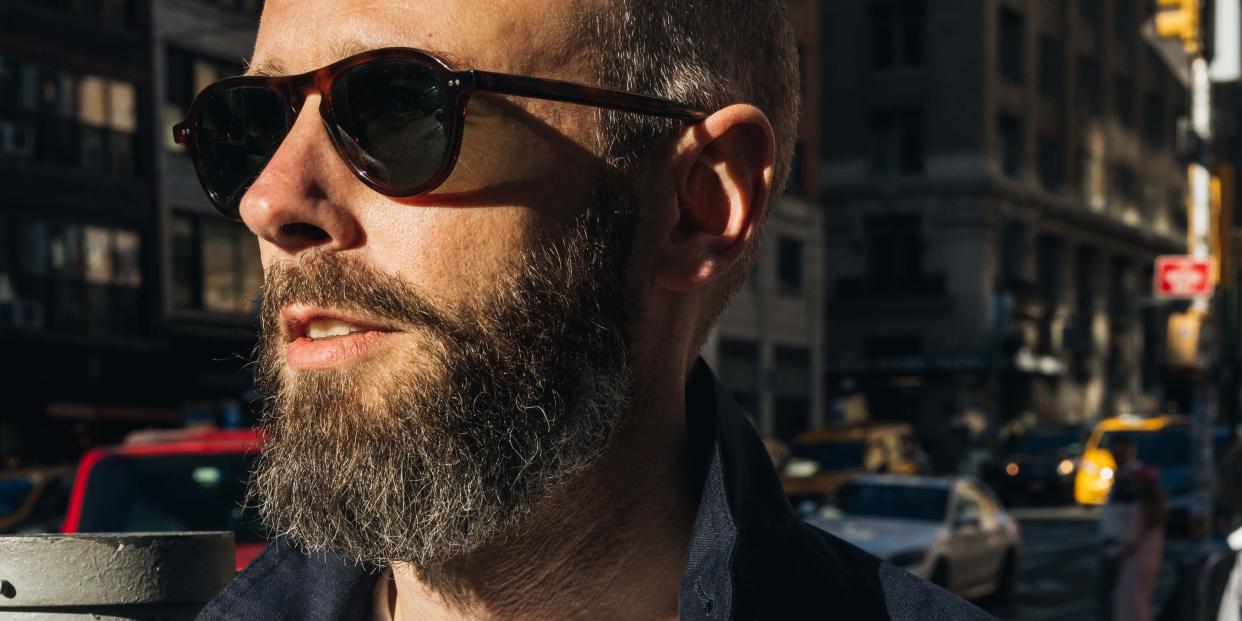
If you're reading this column, I assume this week's subject doesn’t need much of an intro. His name is Simon Crompton and he runs the website Permanent Style, which started as a blog and now also sells products he's collaborated on with some of his favorite makers. Simon takes his site and writing seriously, which he attributes its early success to, and for it, he's been rewarded with a career born out of his passion. If you read his site, you'll notice he interacts with readers on every post in the comments section; it's quite a feat. His content ranges from product reviews and style tips to interviews with industry insiders and even reader profiles.
Below, Simon and I discuss his transition from editing financial magazines to writing Permanent Style, his most recent pop-up above the Stoffa showroom with Swedish menswear brand Rubato and bespoke tailor Fred Nieddu, how he organically grew his business to selling collaborative products on his site and in-person, why New York City fashion depresses him, wardrobe staples he can't do without, and plenty of other topics.
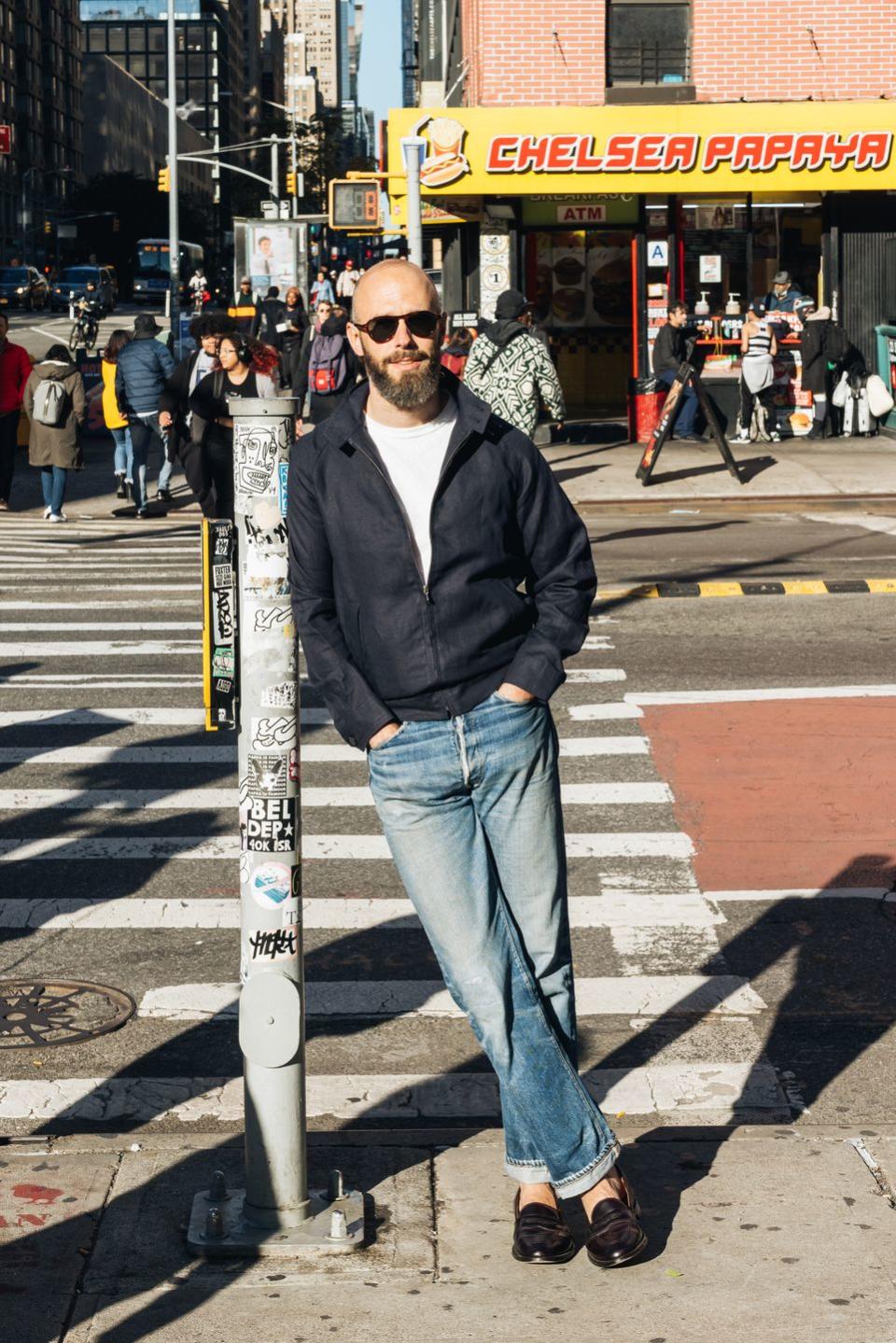
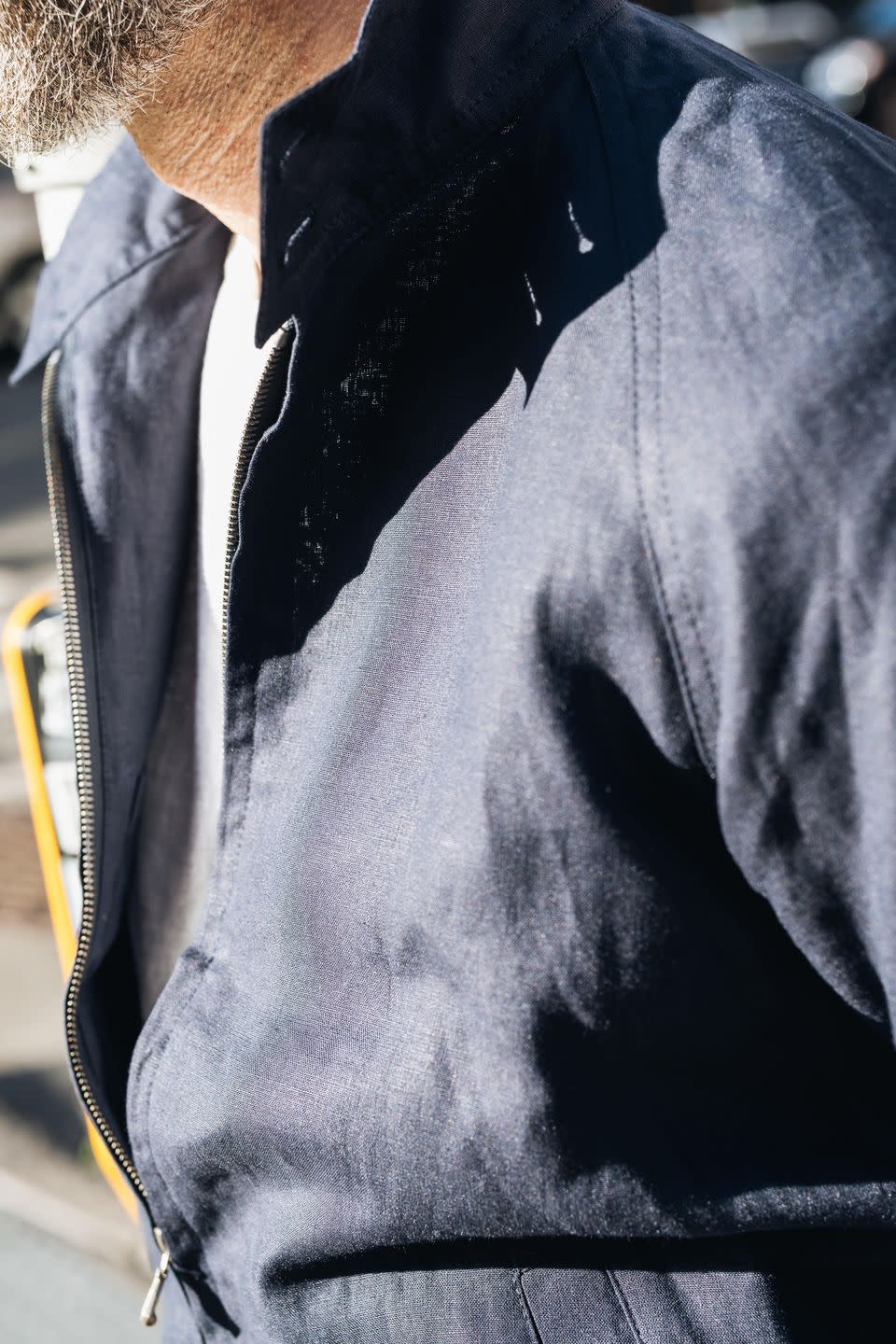
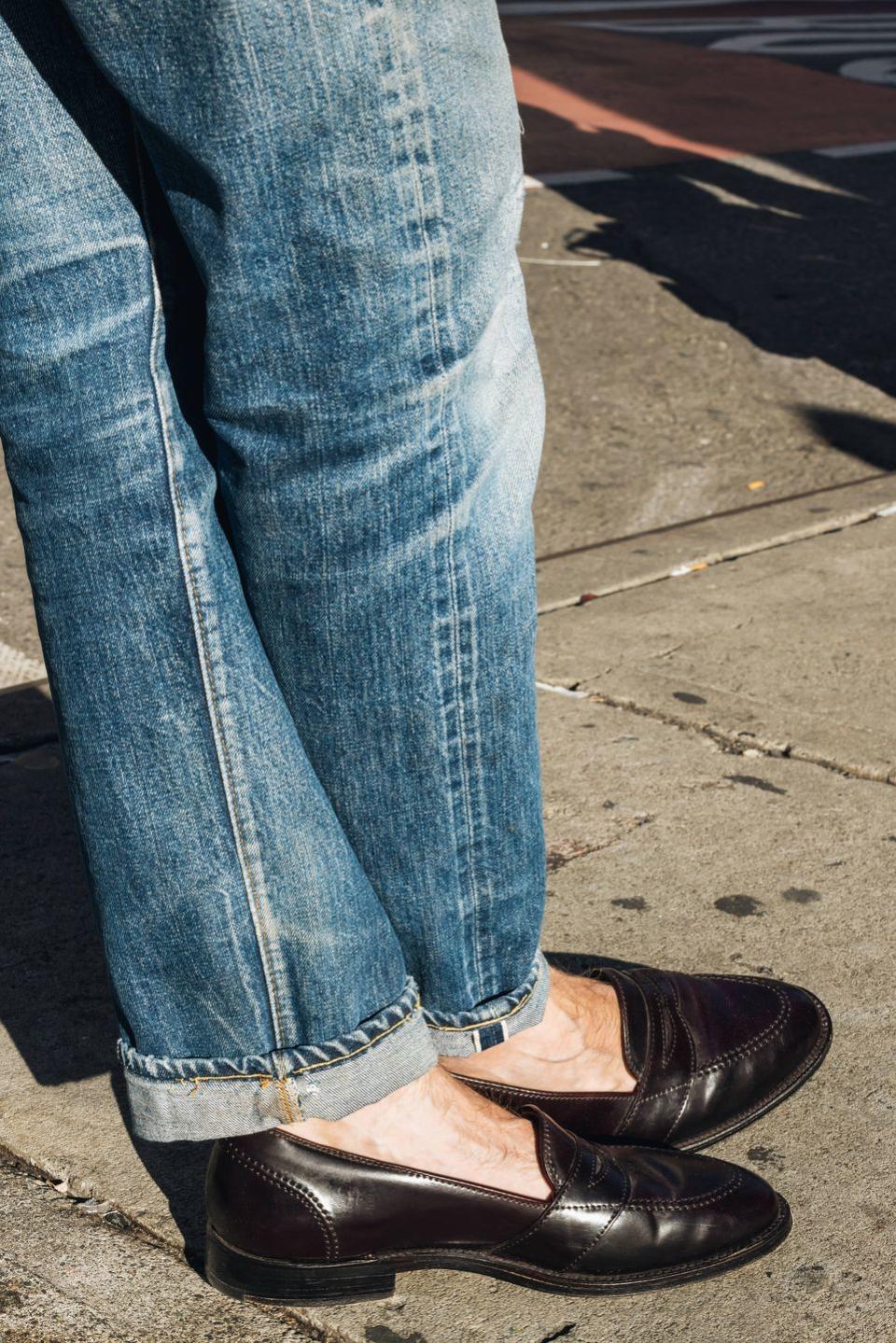
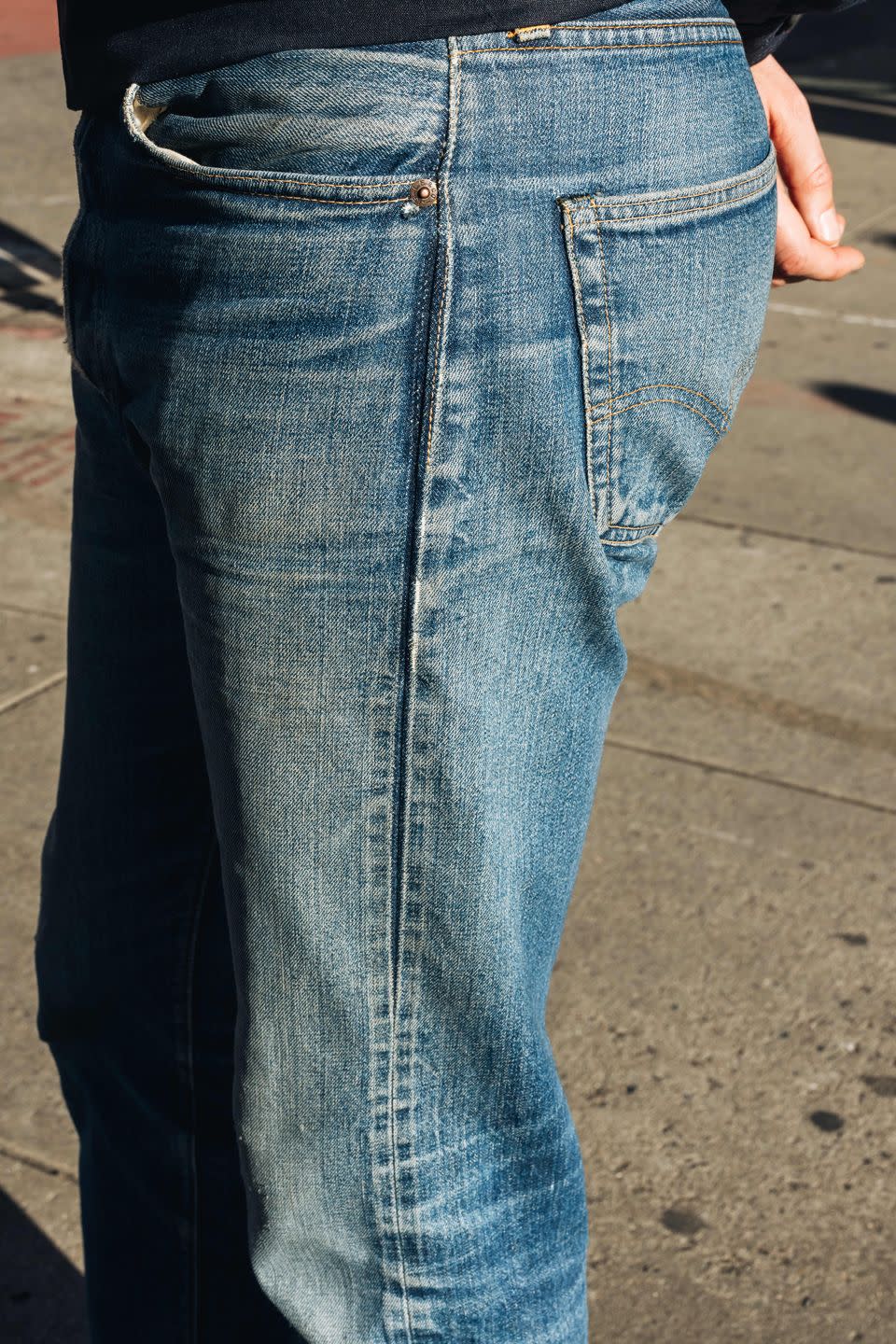
What were you doing prior to Permanent Style and what prompted you to start the site?
I was a financial journalist before. I used to run financial magazines as editor for about 15 years. About halfway through that time, I started Permanent Style as a blog back when blogs became a big thing. It started as a hobby and it grew and grew, I think partly because I was a professional journalist. I guess I always wrote fairly well and I was quite professional and serious about doing it as well. A lot of people started blogs and never really carried on with them, but I was always quite professional with it. And then, about seven years ago, I quit to do the blog full-time, when it became big enough to justify doing so.
Tell me about the pop-up you just did here in New York and why you decided to do it here.
We've run this kind of pop-up, which we call Permanent Style Presents, in London for about five years. The concept of the popup was that it was a way to give a physical space to a lot of the brands that we really liked and we loved writing about that people couldn't see in person, either because the brand was only online or because they were from a different country. The idea was: We hold an event every six months with a group of brands that we really like, that people hadn't seen before, and give them that exposure. We've done that every six months for the last five years. This was the first time we did it in New York; we had a lot of our collaborations. The number of collaborations we do as a website increased over the years, so it's a lot of those types of products. And then we brought a Swedish brand—it started off as a knitwear brand, but they do other stuff as well now—called Rubato, who I really, really like. It's an Italian word that means stolen. It's a jazz phrase, like stolen time, improvisation. And a bespoke tailor called Fred Nieddu.
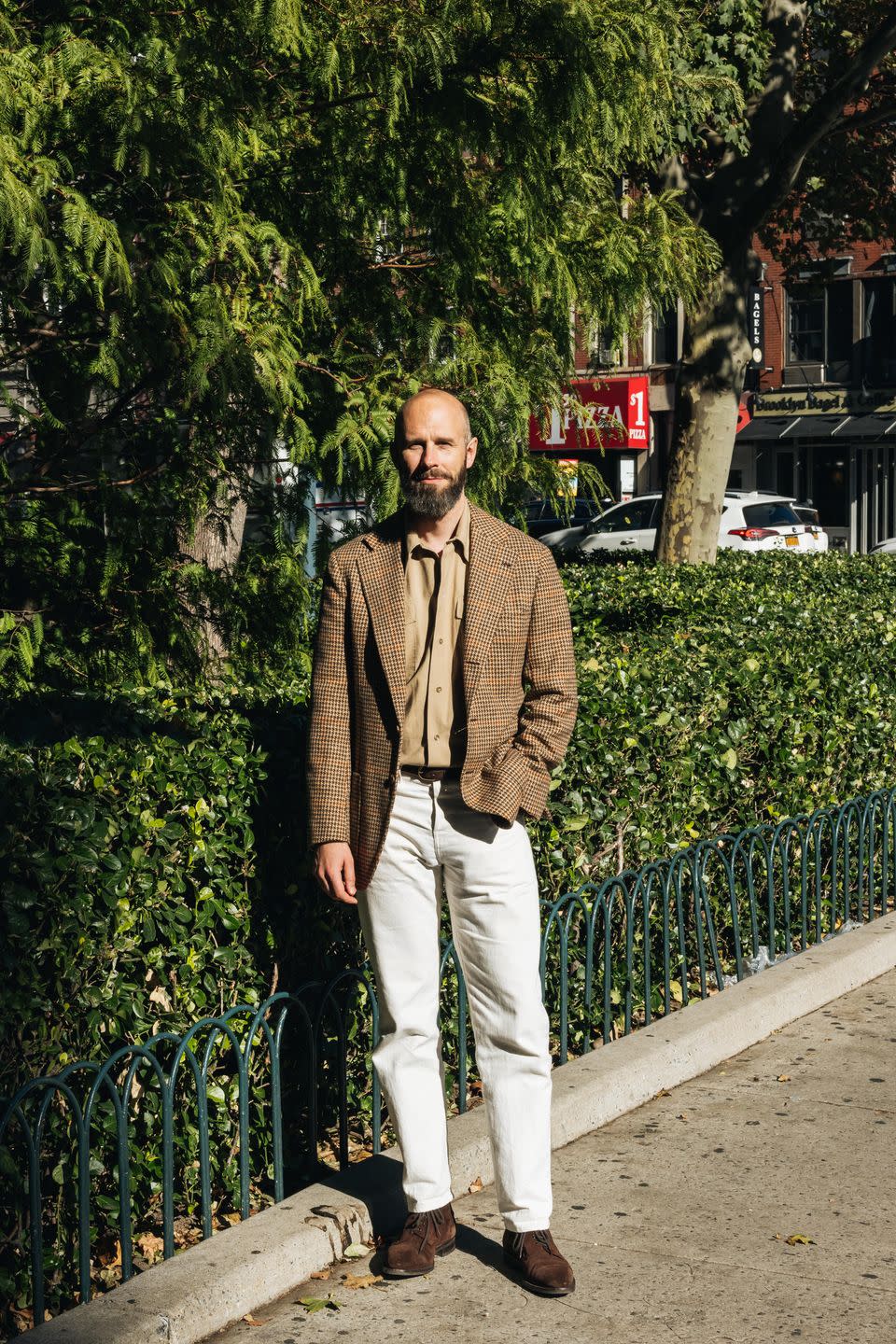
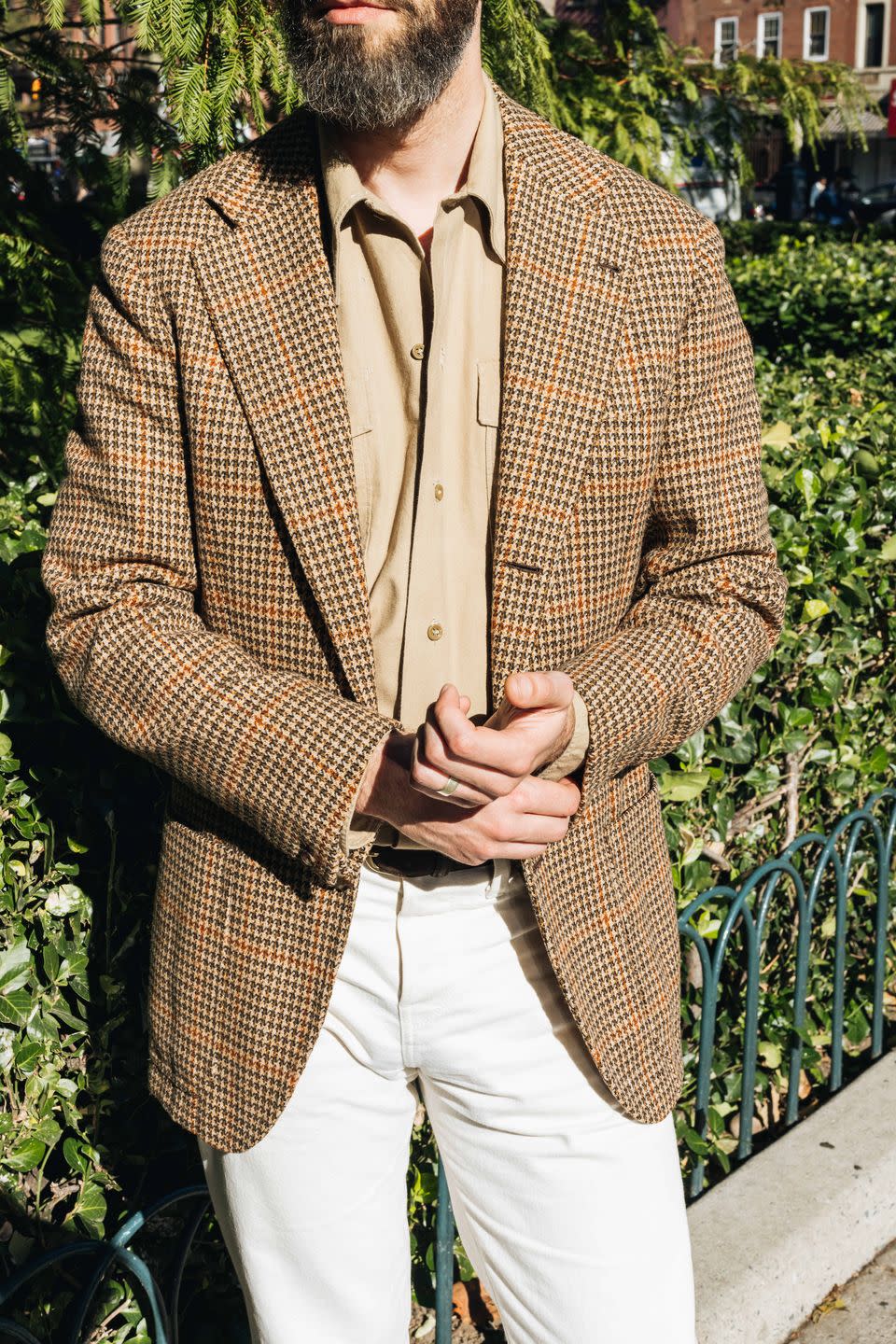
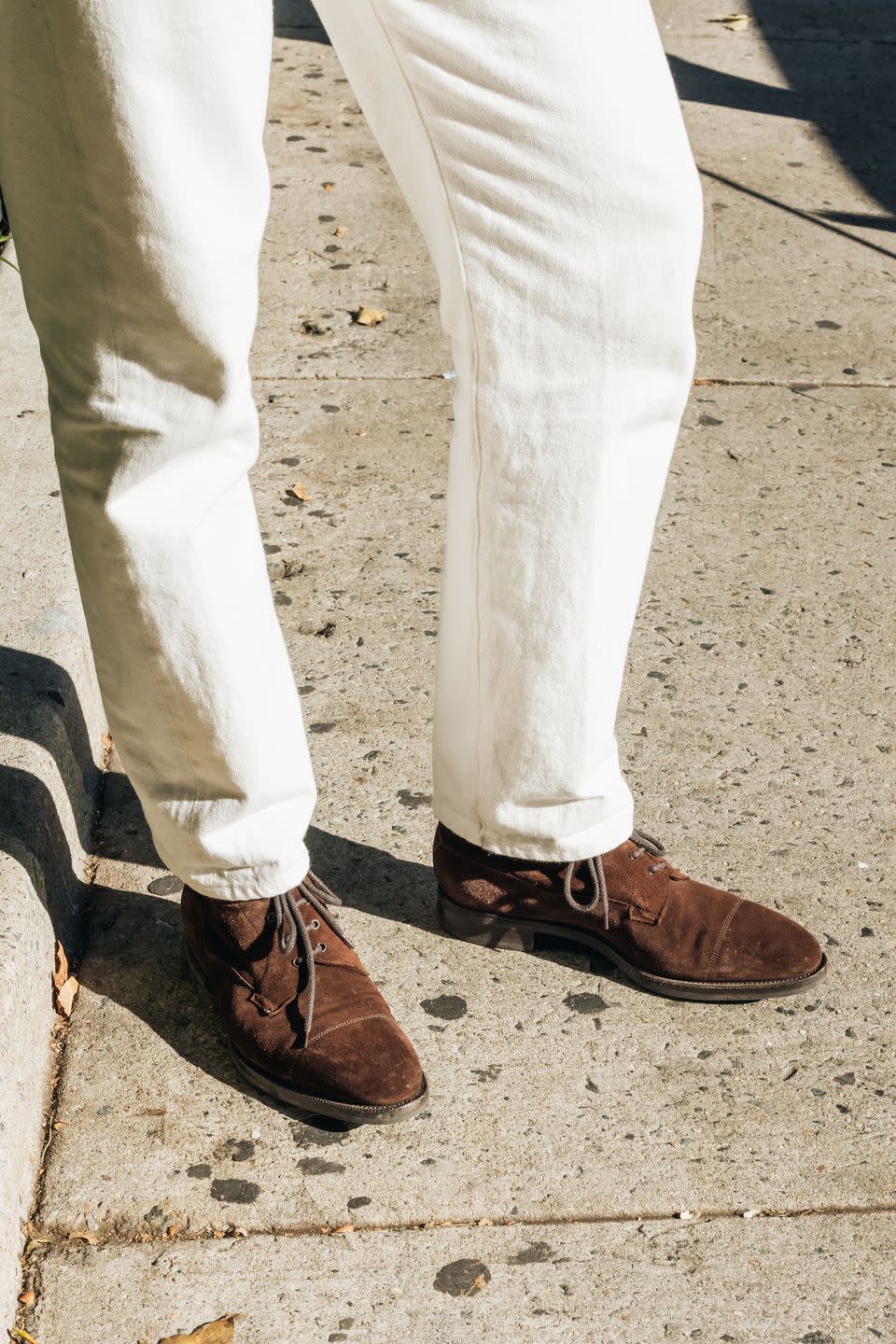
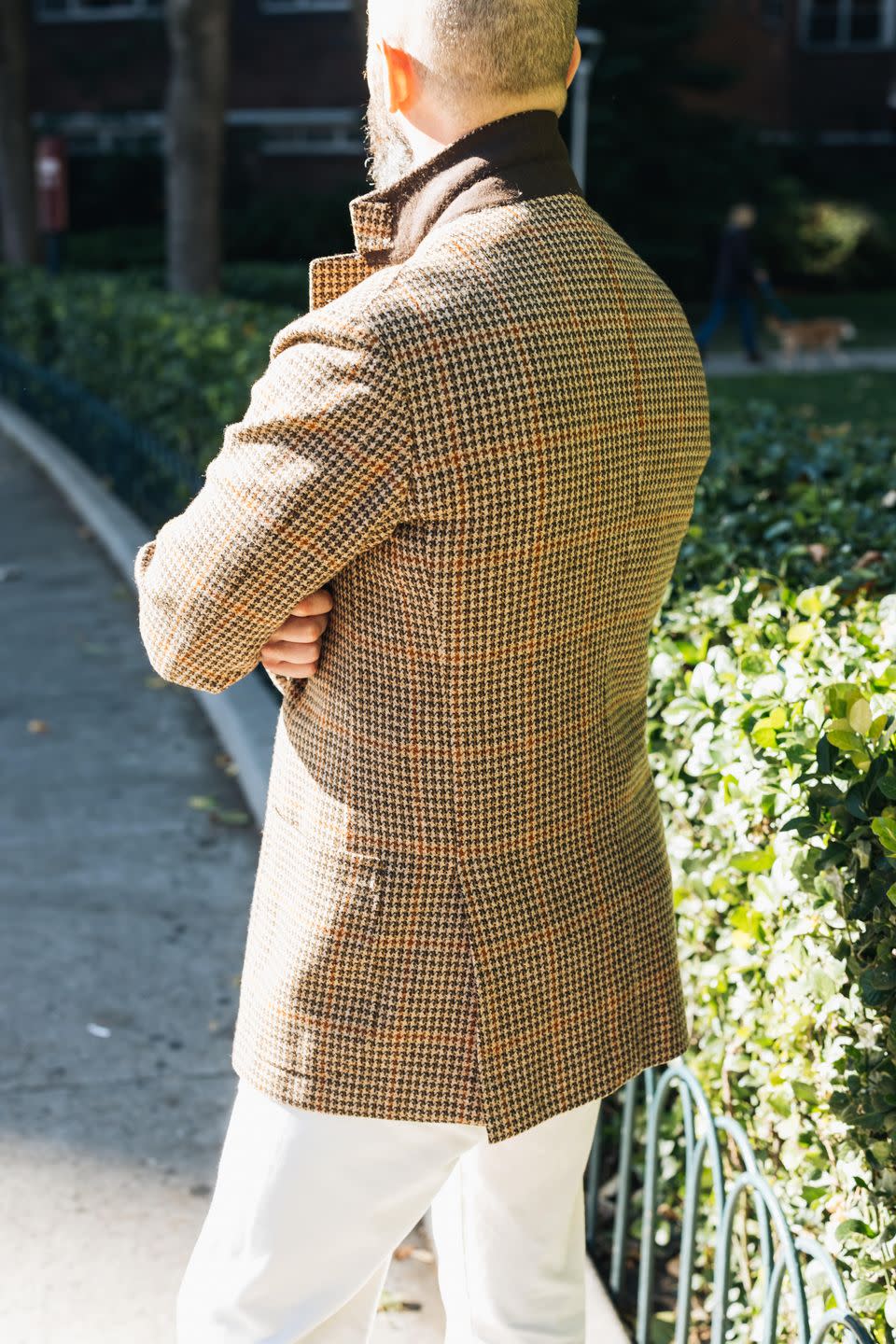
How did you go from having a blog, obviously with words and photos, to selling products? What was the transition like?
I think these days, it seems like a very obvious thing that everybody does. But back when we started doing it about eight years ago, it wasn't that common. All those collaborations, I approach as a consumer. There are lots of products I really love, but my experience would often be that, particularly if you're working with a more traditional or historic kind of maker or manufacturer, the design side isn't always the best. We started working on our own oxford shirts. We were trying to produce this oxford cloth, like the kind of thing that Brooks Brothers sold back in the '60s, because it didn’t really exist. I wanted a polo shirt that I could wear with a blazer to the office, so we created one that was heavier. It's not just a summer thing. It's got a long body so you can tuck it in like a regular shirt. It's got a proper collar stand on it. Each product has been some kind of development like that. We did a trench coat which was just super long because I got so irritated how all men's raincoats were just so ridiculously short. They don't keep the bottom half of you dry. For the last eight years, we've probably done two or three every year. We've gone from just collaborating with brands where they sell the product and it's still very much their thing, to the point now where we have much more of our own kind of fuller shop. That's all grown very organically, but in quite a satisfying way.
Is there anything you're loving in menswear these days?
I'm not sure how many readers are aware of this, but there's a very specific classic menswear journey that started about ten to twelve years ago where guys started getting into tailoring in a really strong way, discovering bespoke tailors. This started around the period when Mad Men became a thing. Guys got into suits and ties and pocket handkerchiefs. You were trying to find these authentic makers; you got obsessed with which is the best Neapolitan tailor and which is the best shirt maker, blah, blah, blah. In the last few years, I see a lot of signs that that classic menswear crowd has grown up or matured in many ways. People are a lot more playful with things and less obsessed about details. Although there's a lot of readers on the website who have never really dressed, or thought about clothes very much, and really don't know how to dress. They can get the point of understanding all of these kinds of traditions and conventions quite easily. It's much more satisfying when you see them have their own style and take that to that next level where they're actually being quite creative and quite personal with it.
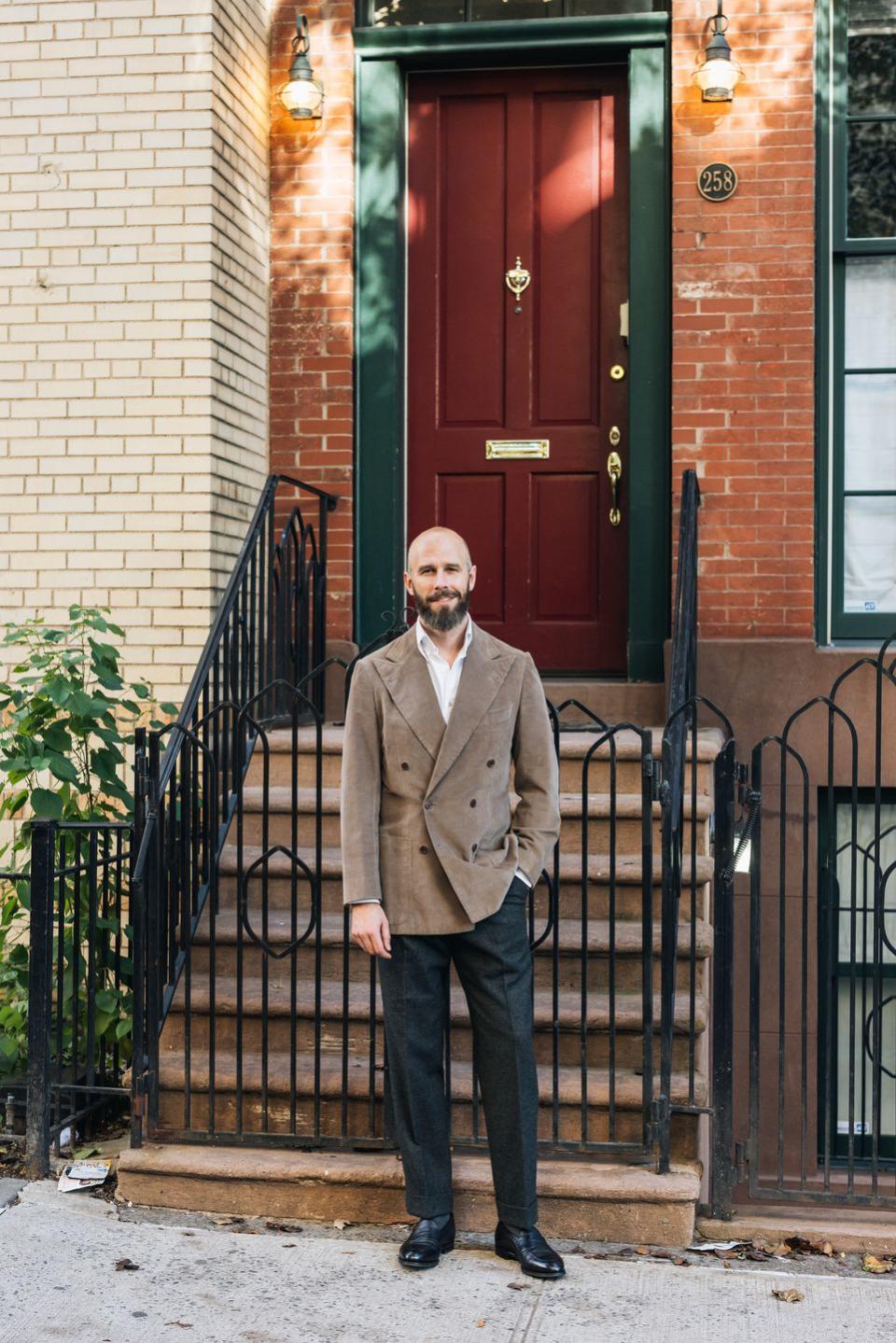
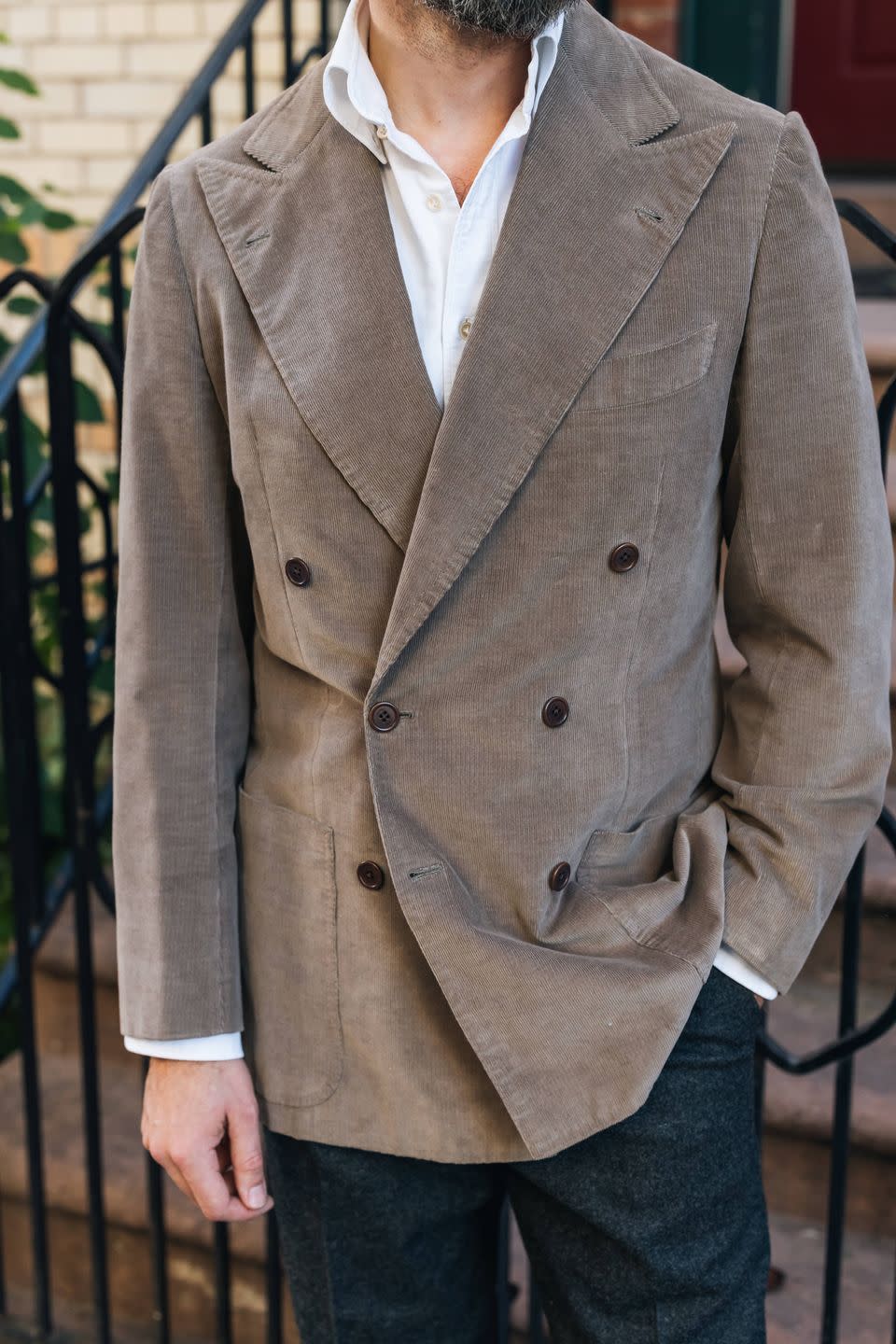
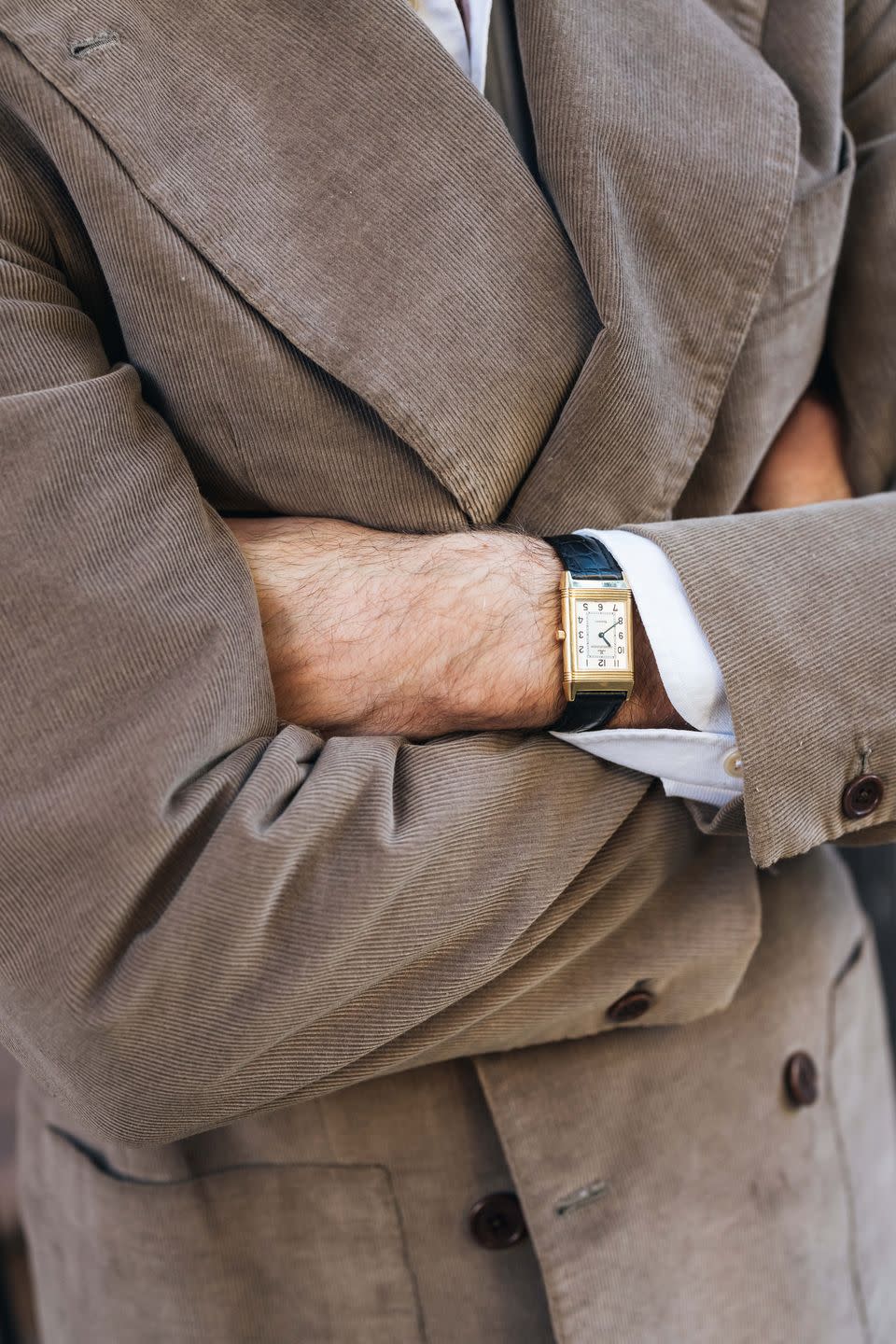
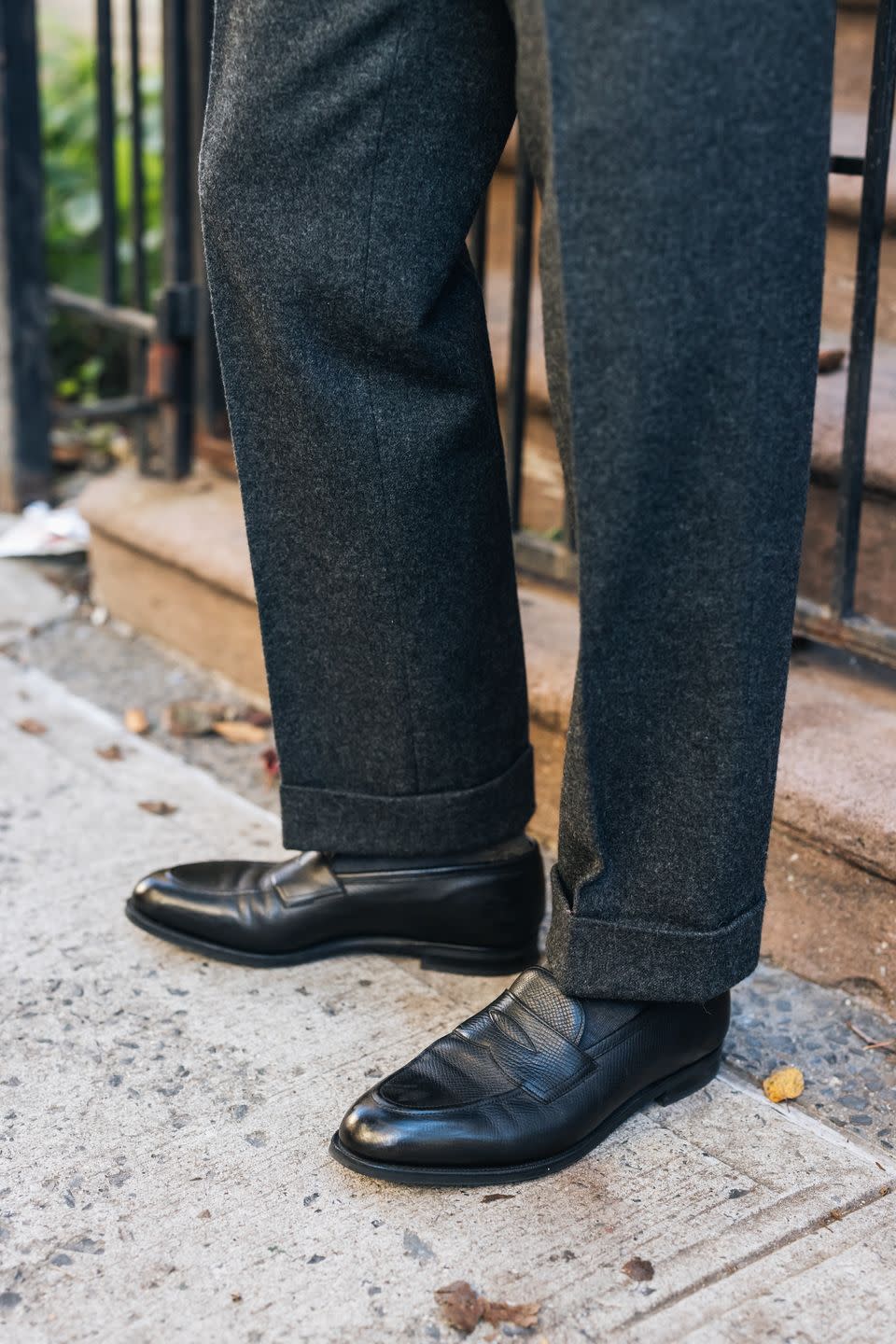
Conversely, is there anything you're not into?
There's a whole bunch of stuff about clothing as a whole that I find really depressing. There are so many brands that are really hype-driven, which is sad. I actually see a bit more of that in New York, where their presence is more obvious, whether it's Supreme or Kith, or all these kinds of brands. I find it depressing because there are so many people who really want these products but they don't really like the product itself very much. They don't like the clothing. They like the idea of it and they like the idea of possessing it. I don't think those two things are really particularly healthy. I remember someone saying in a comment to me on the website that I thought people were be bit too materialistic, but I think that's actually wrong. There's too much consumerism. There should be more materialism because materialism is caring about things and materials. Most of the time, people buying a lot of these clothes, fast fashion or whatever, don't actually care about the products that much—the thing itself, the material it's made out of, how it's made, the silhouette, the colors. It's just about having this impression that you then want to give to other people and that's the only thing they care about.
What are some common style mistakes you think men make that are easily correctable? What would you like to see from the average man?
Men have a tendency to become a little bit focused on just one thing. They don't look at the whole. The type that will be like, “So, what's the shoe I want?" and they'll become obsessed about the whole thing, like double monk shoes back in the day. We just got obsessed with the shoe and not necessarily thinking about how it fits in with our style as a whole. That's why you see guys wearing tan-colored double monk shoes with quite conservative suits and it just doesn't work, because they're not thinking about the whole outfit together. Another mistake guys make is often not taking shoes seriously enough. In New York, I keep on seeing, particularly older guys—middle-aged or maybe 50s, even 60s—who are quite well-dressed in many ways. They're wearing a very nice shirt and knitwear and trousers or jeans, and they have a nice haircut and they're pretty well-put together, but they just have the ugliest shoes on, which I guess will probably be driven by comfort, which I can understand. But you can have comfortable shoes like a really, really soft Alden handsewn loafer. It's incredibly comfortable if it fits well. I don't know what the solution that is. Maybe just more awareness of how shoes can fit well and then be really comfortable and also stylish.
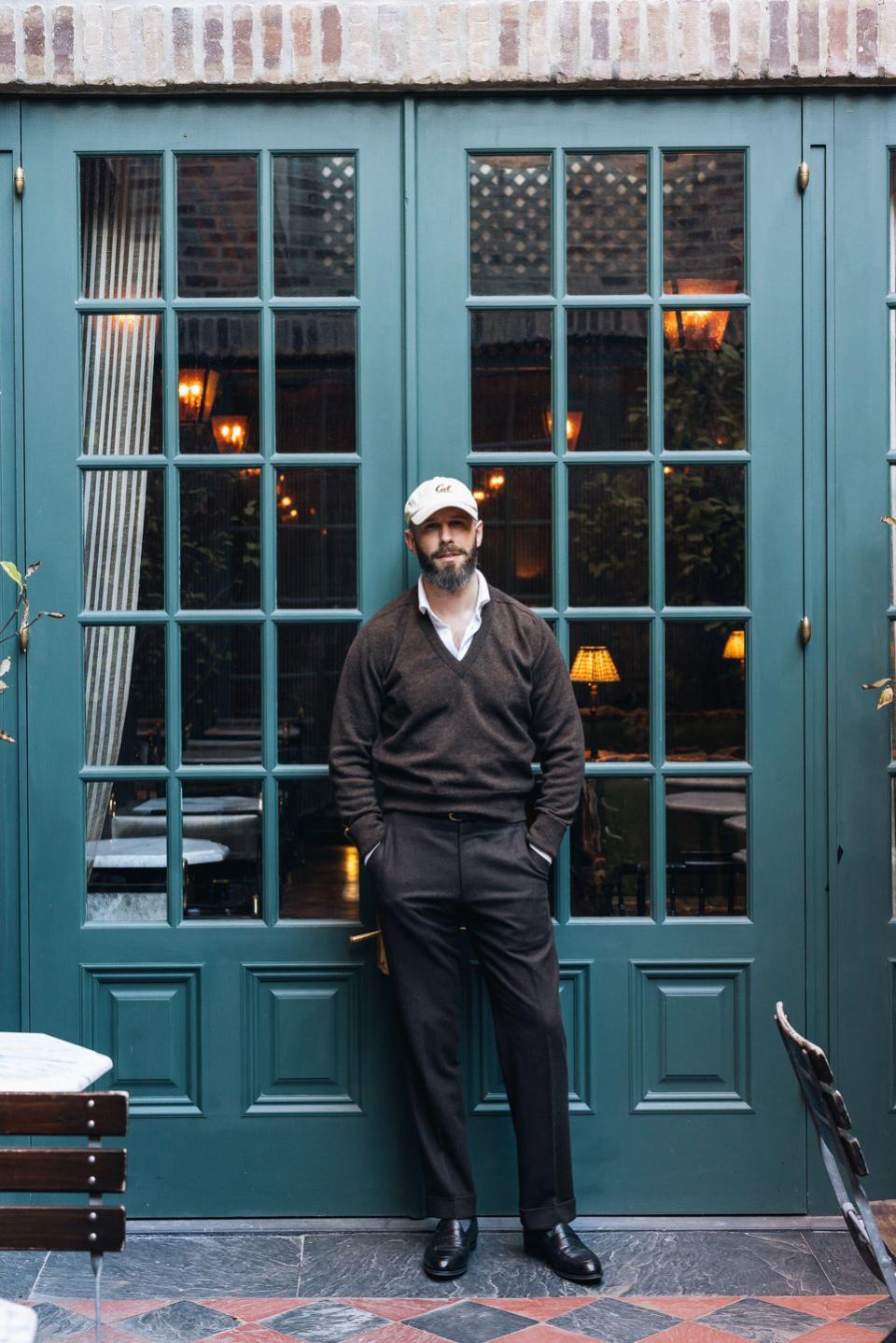
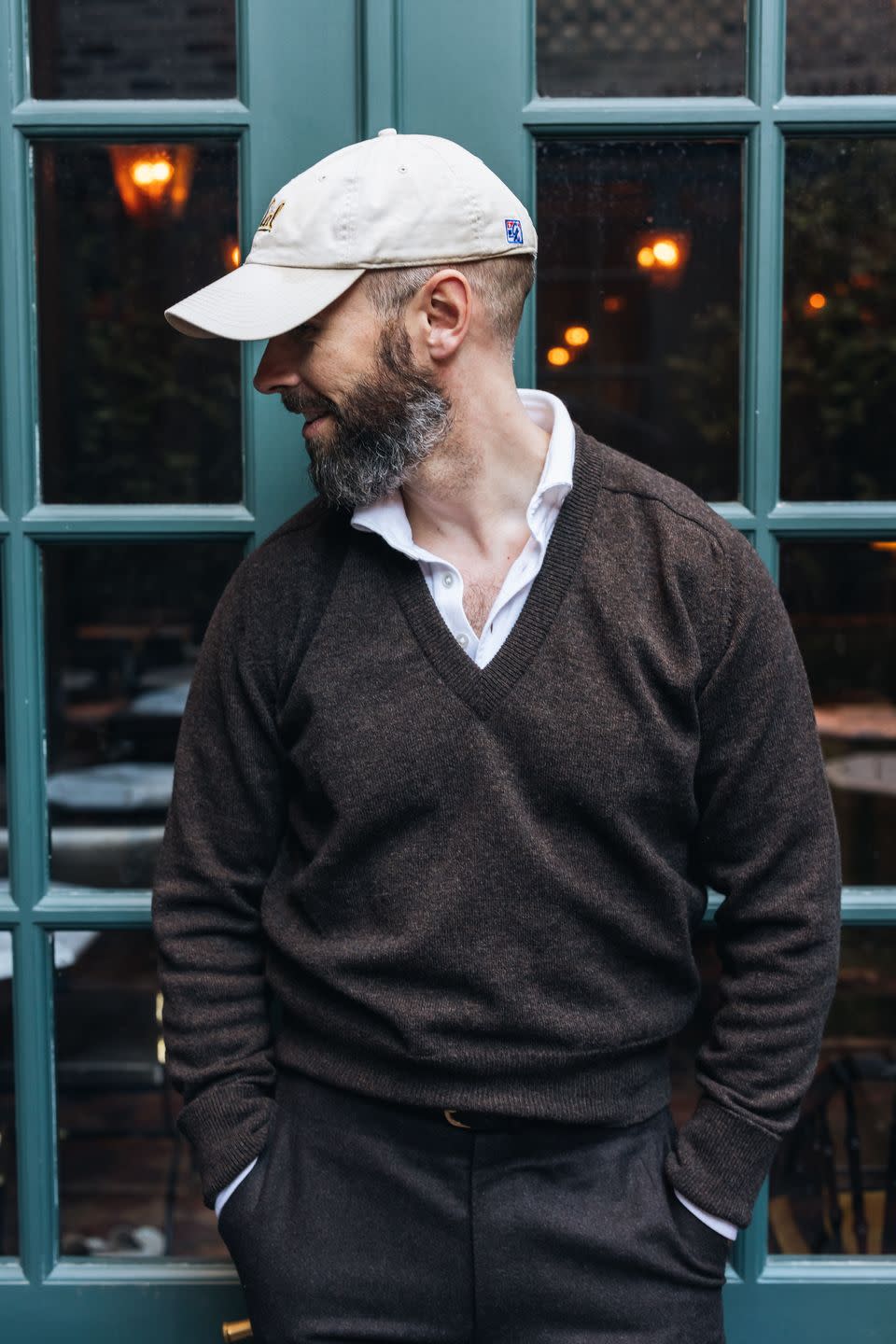
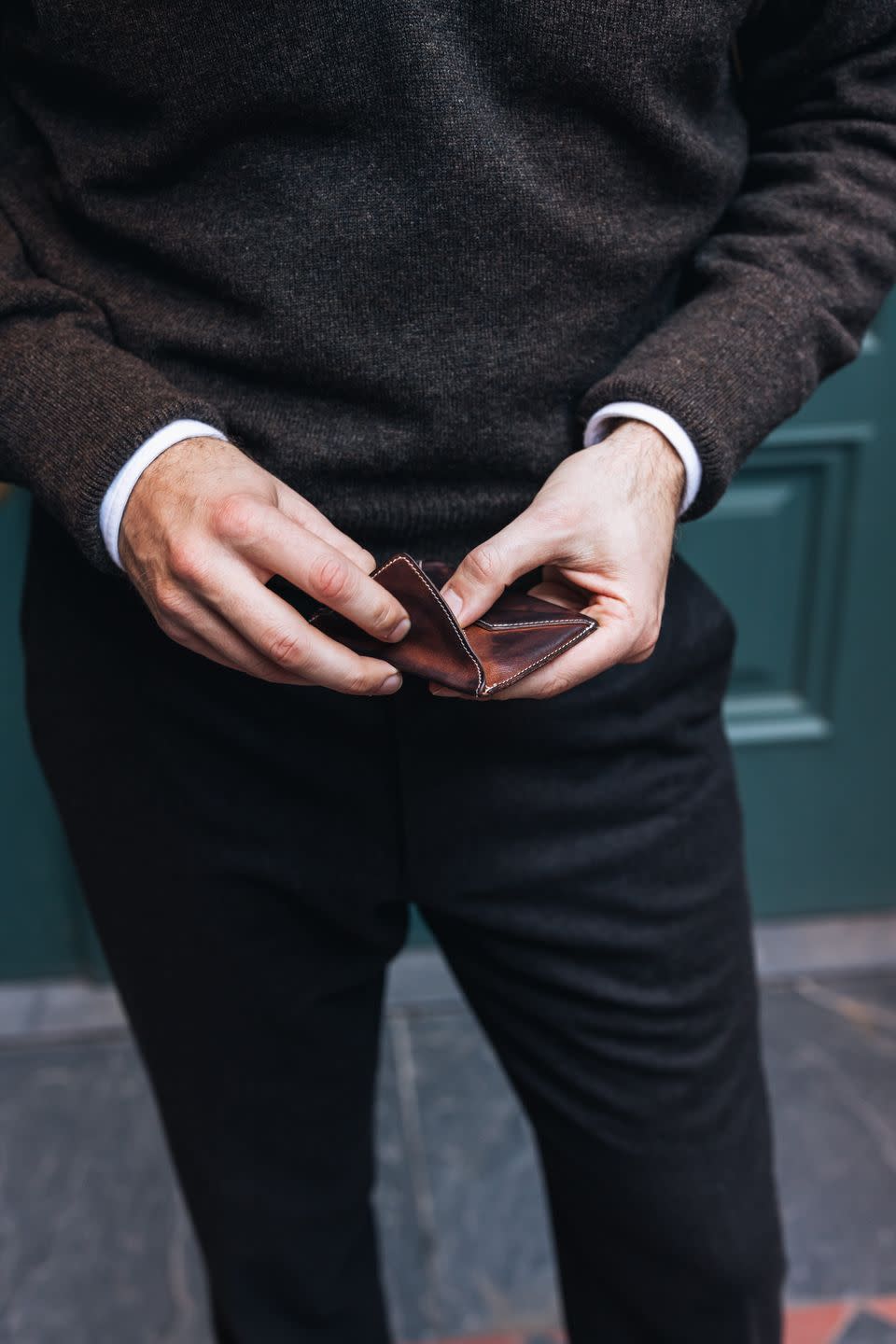
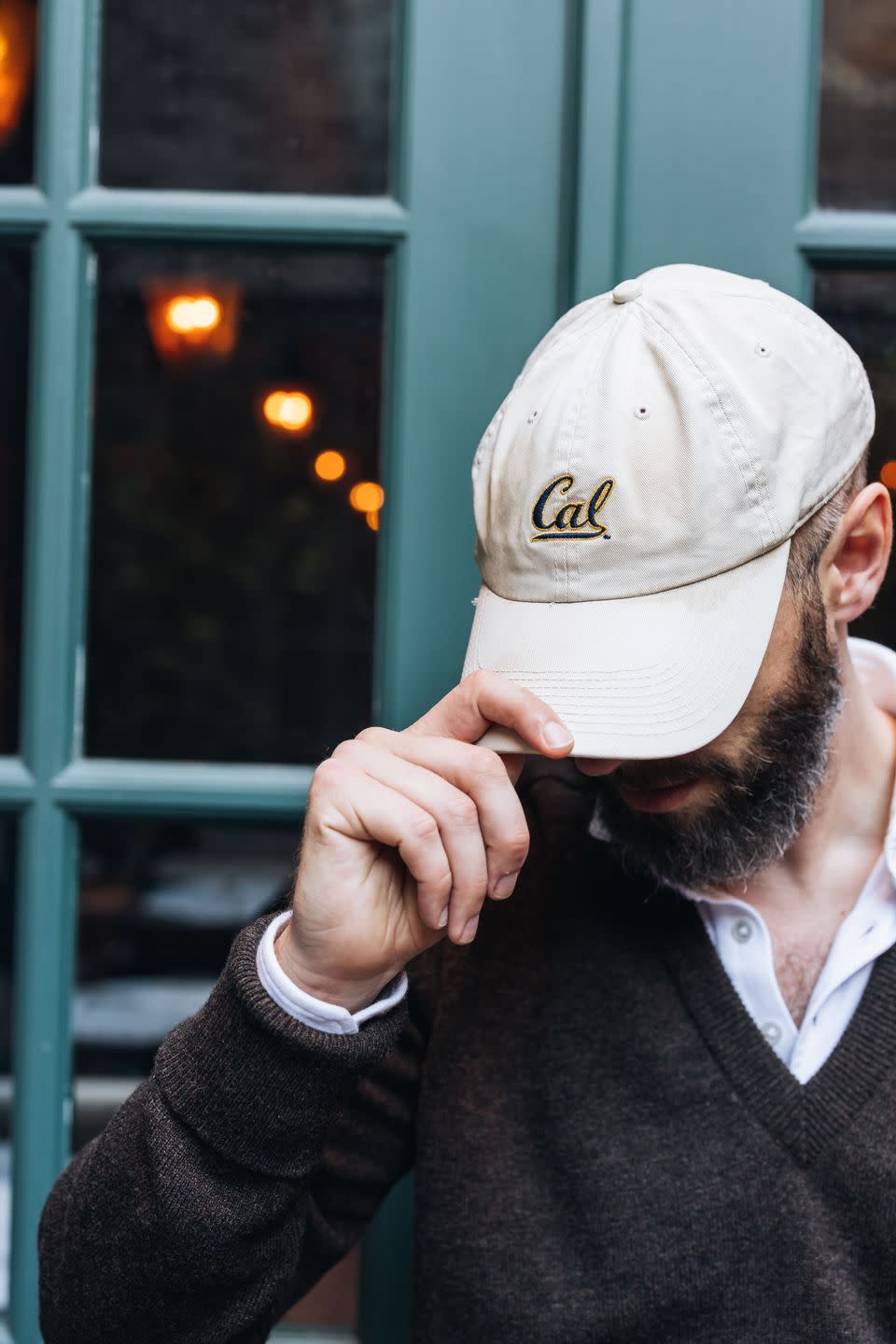
Are there any people whose style you admire either past or present in life?
A lot of the classic kind of style references, whether it's Cary Grant or Paul Newman. I think often, the thing I admire about a lot of those dressers is when they feel very, very natural in their clothes and very easy. That’s something men often forget because they look at photos thinking, "Okay, what's the cut of his lapel? What tie is he wearing?" rather than actually recognizing the reason he looks stylish is because he looks like he hasn't thought about his clothes at all. I really admire Oliver and Carl’s styles, who run Rubato. They're a good example to me of menswear growing up, where they've been wearing tailoring and bespoke items for years, but they're now finding clothes which feel really satisfying to them, and are really well-made. A lot of their stuff is Scottish knitwear, and everything else is made in Japan. It's great quality, but it's just very, very easy. I talk to Carl about children. Oliver just had his first child. They're that age, and I am too, where you want practical, easy clothes that don't mean you stand out in the playground, and it won’t matter if your kids get sick on them or whatever else, but you can look after them really, really well and they look better over time. If the jeans start getting faded or shirts are starting to get frayed, they become more precious in that way.
What are some wardrobe staples you can't do without?
They're all quite classic things: brown suede boots, good mid-blue jeans, a good white button-down oxford shirt, a really nice double-breasted coat, navy or a gray herringbone. The wonderful thing about menswear is you don't have to have that many clothes. You can dress quite simply and therefore, don't have to have too much stuff. A really good, navy crewneck sweater. You see someone wearing one with a pair of amazing vintage Levi’s and beaten-up pink Vans and he looks amazing. But your dad might wear one with some really ugly slacks and a pair of cheap, comfortable shoes. So it's all about how you wear it with those kind of things. But any of those classics, you can do loads of things with.
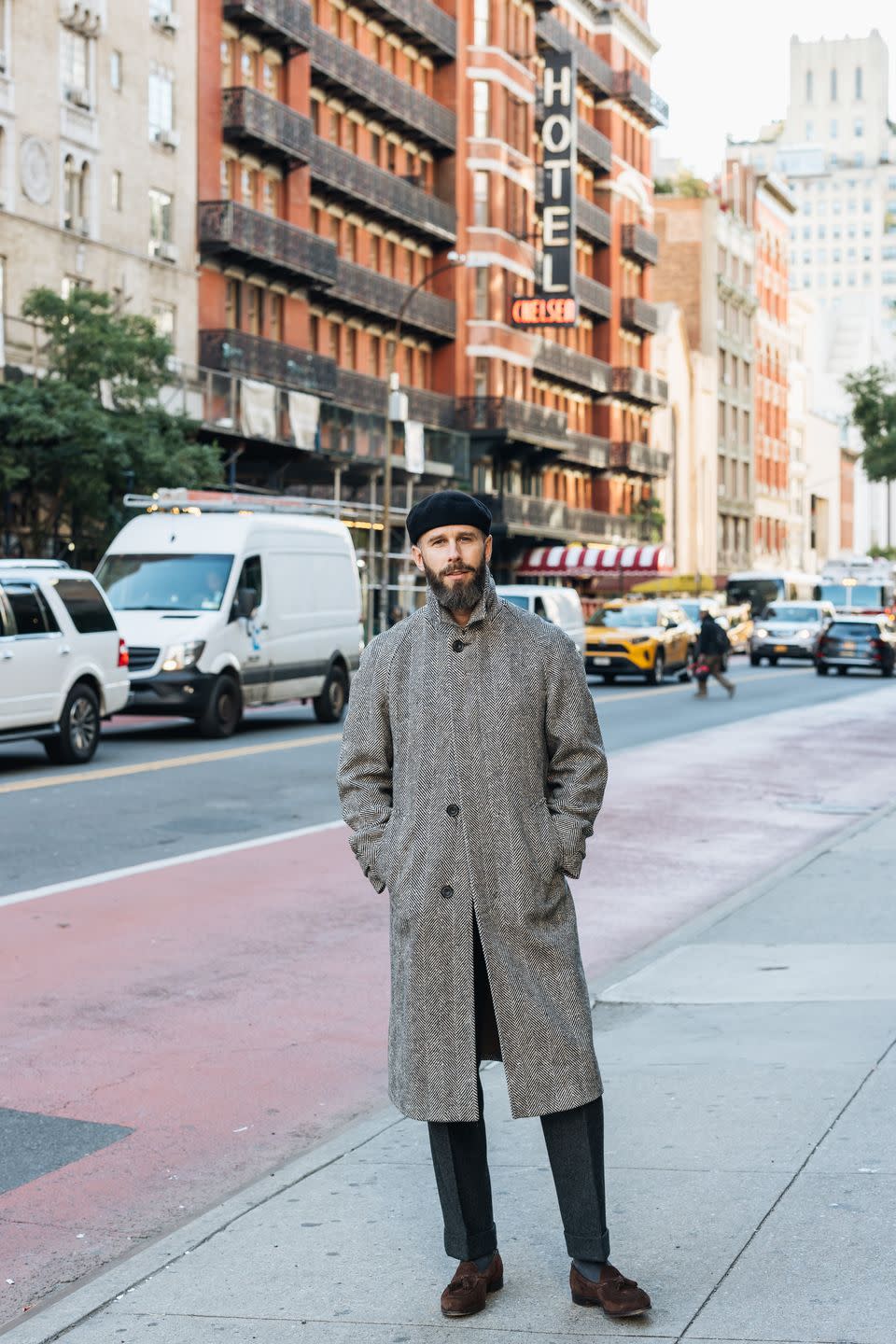
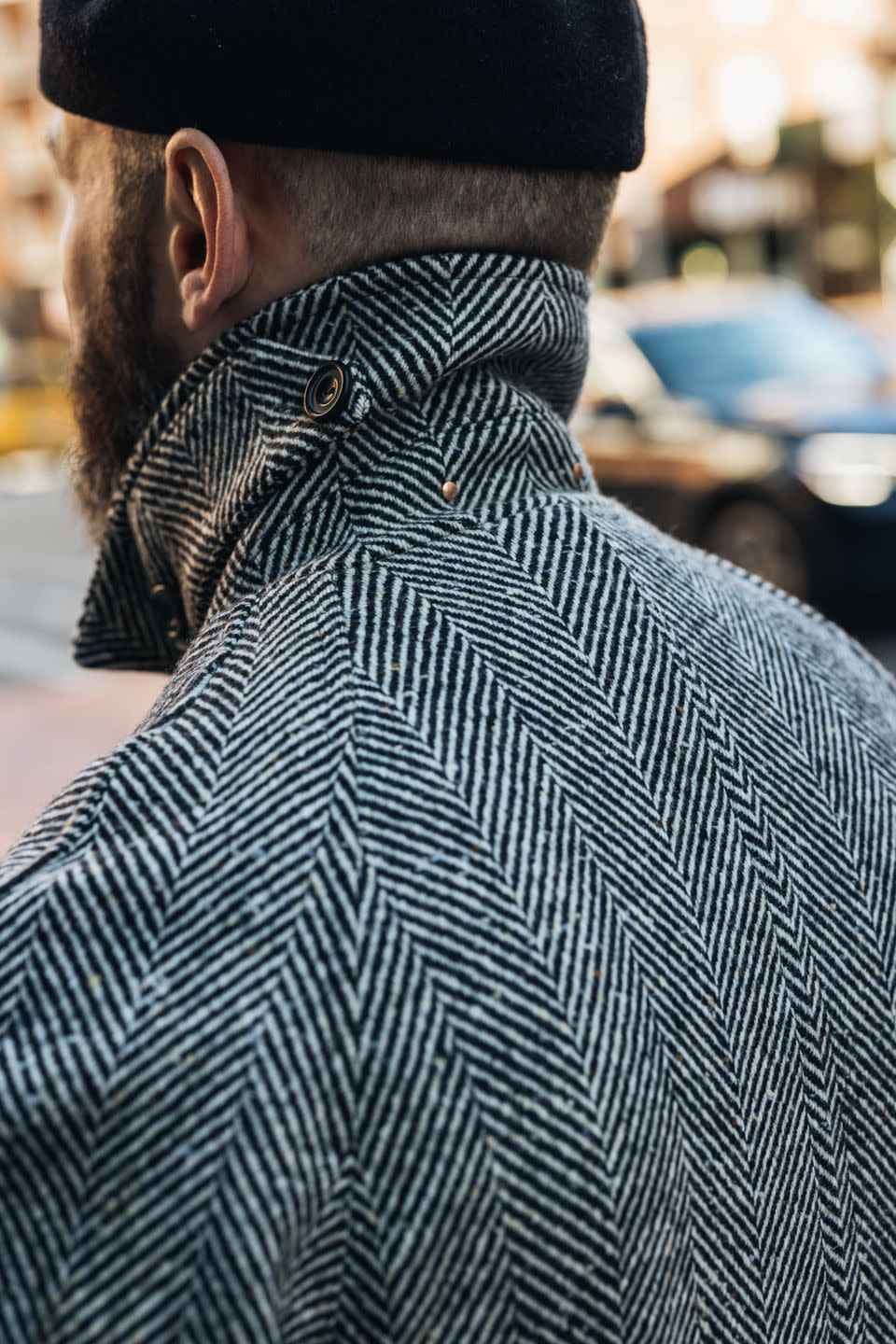
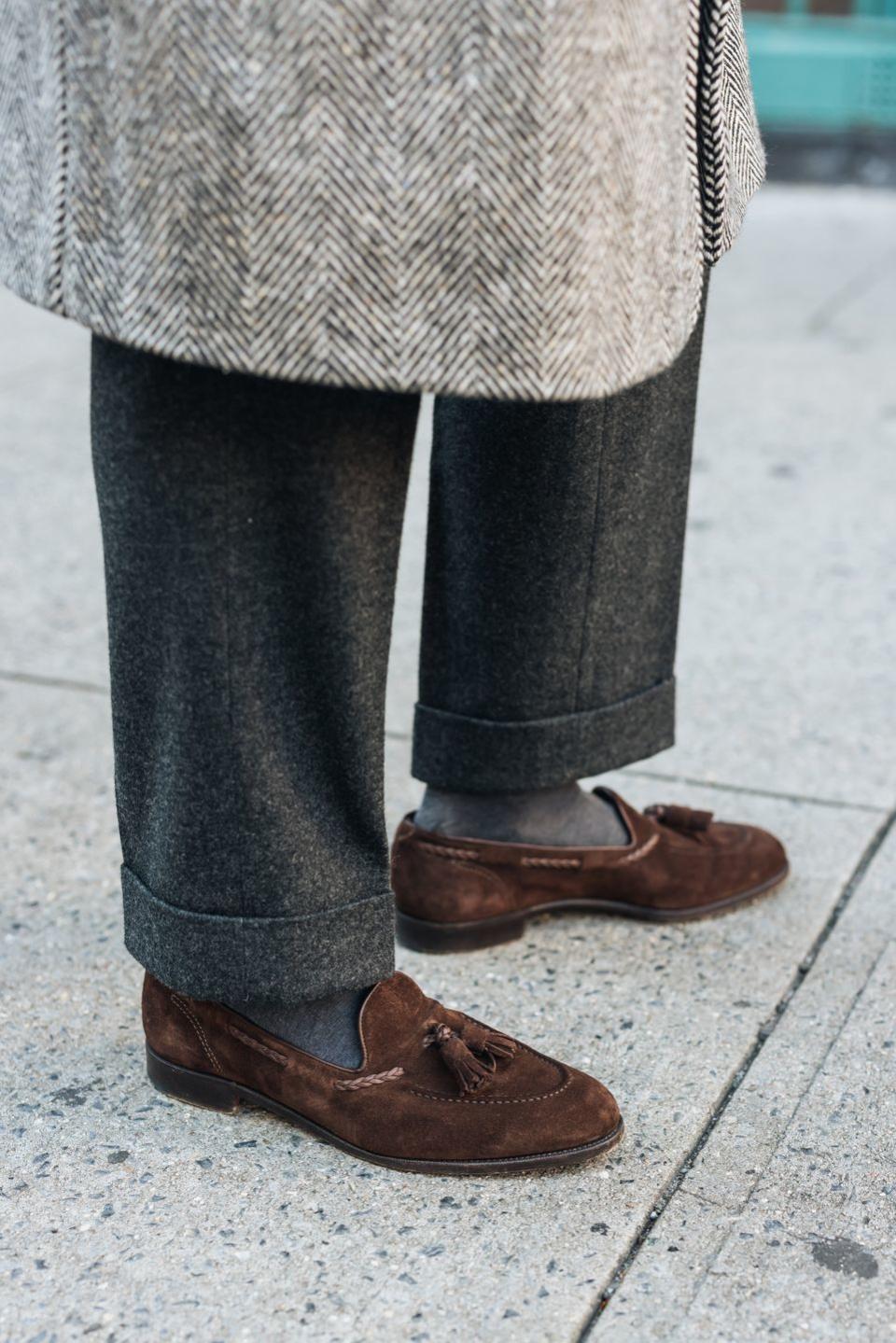
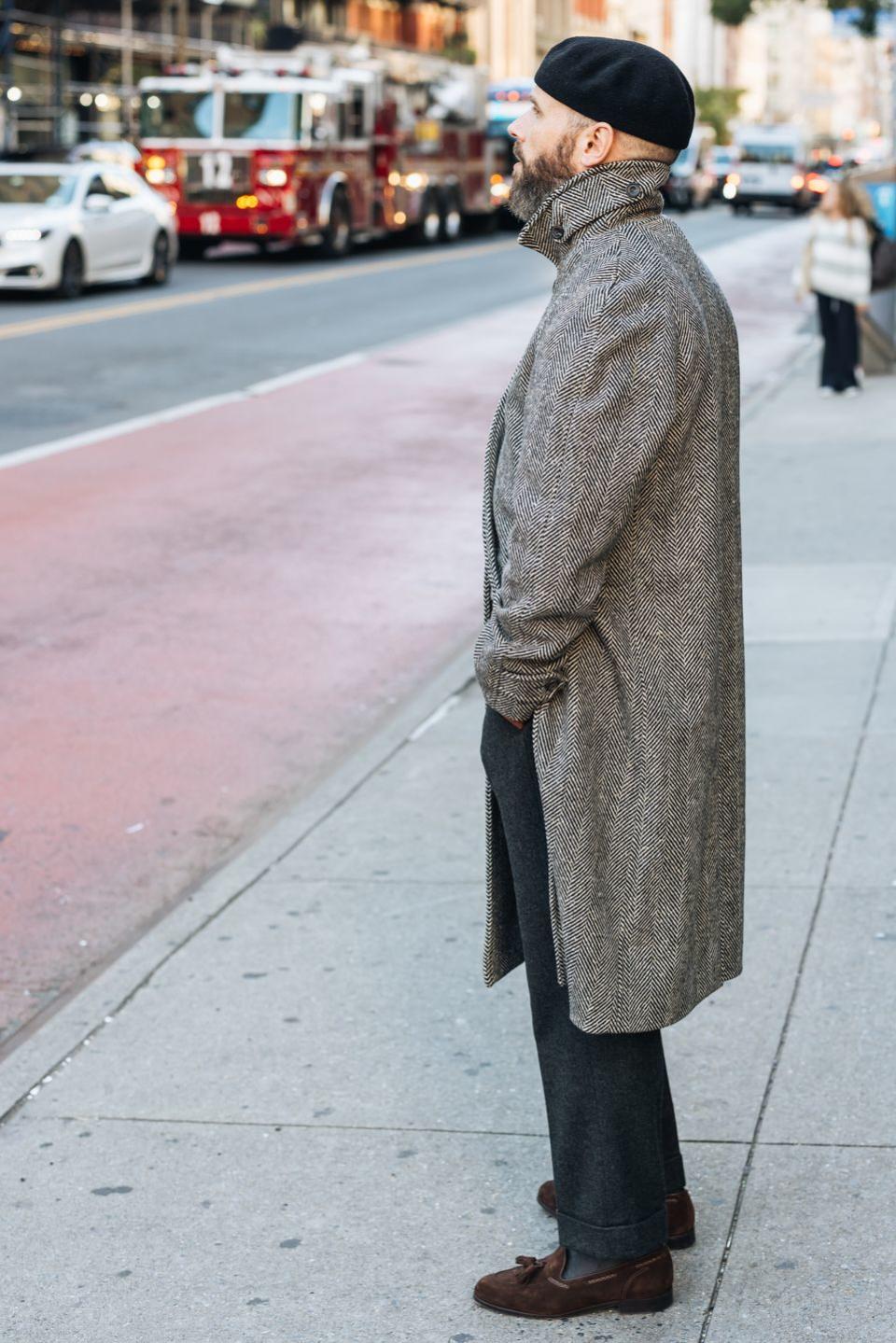
Is there anything you're on the hunt for?
I've got much more into vintage clothing in the last few years, I think, because I've started to appreciate how a lot of good clothes age. It's got something in common with bespoke clothing where I like the fact that a lot of vintage stuff feels unique. It's a one-off and you never see anyone else doing the same thing. I always have a long list of stuff I'd like to find vintage: a nice, old pair of '50s khakis, for example. But often with that stuff, half the fun is the search. It's nice going to a vintage shop and you've got ten things on your list you're looking for, but it doesn't really make a difference whether you find zero, one, or five of them. It's just the pleasure of going to be involved in those clothes and getting ideas from the stuff you see.
What does the perfect weekend consist of for you?
I've got three daughters and I'm incredibly proud of them and of our family, so it's basically just being with them the whole time. Getting up with the three-year-old in the morning; she's just gone in a proper bed. We're trying to get her to stop getting out of her bed, but often, we just get woken up at six o'clock in the morning with hearing her bump down the stairs on her bottom into our room, and then we get up and make breakfast for her. My other daughters get up, and we talk to them about what they're going to do, and we go to the park with all of them and start. I think that's just the perfect weekend.
You Might Also Like

